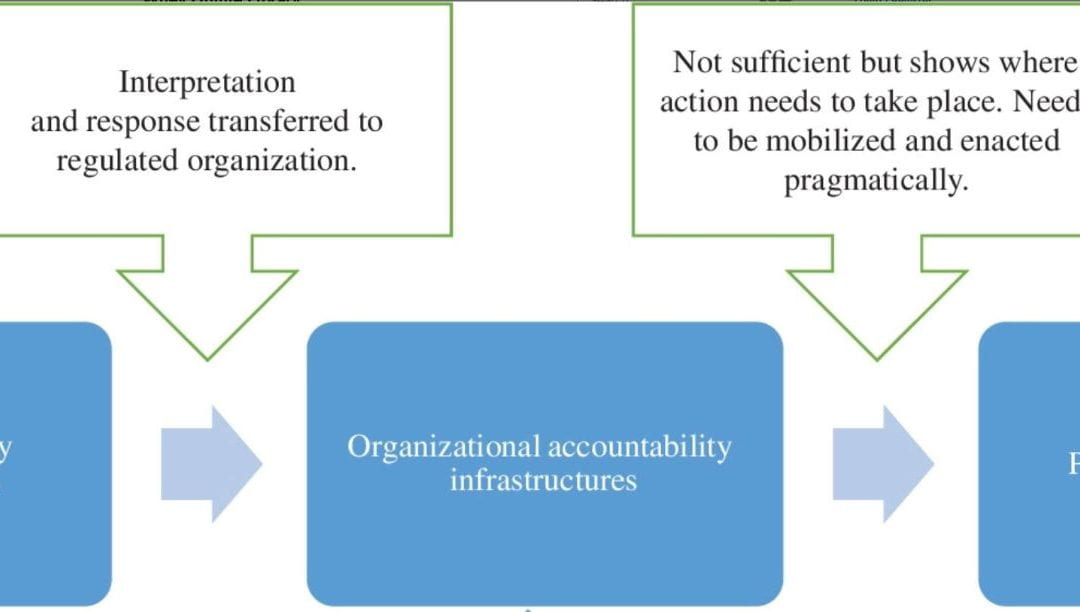New article by Ruthanne Huising in Regulation & Governance
We trace the pragmatic turn in regulatory governance from the level of the state and civil society to the coalface of the regulated organization. Since the 1980s, an array of new regulatory models has emerged. These models, while distinct, are unified in two related tendencies. First, they support the devolution of responsibility for standard setting, program design, and enforcement to the regulated organization. This delegation of governance to the organization itself has catalyzed the creation of accountability infrastructures within organizations, a network of offices, roles, programs, and procedures dedicated to aligning the organization’s operations with external standards, codes of conduct, ethical and normative expectations, and regulations. Second, the diverse regulatory models depend, often implicitly, on organizational accountability infrastructures that incorporate the tenets of pragmatist philosophy: inquiry through narration, adaptation to context, and problem-solving through experimentation. Reviewing the empirical literature on organizational compliance, we find ample evidence of inquiry through narration at the organizational coalface. However, we find limited evidence of narrating plurality in the organization and narrating experimentation as problem-solving, as these activities create tensions with internal and external parties who expect singular, stable representations of governance. These tensions reveal an important incongruity between pragmatic governance across organizations and pragmatic governance within organizations. We contribute to the regulatory governance literature by documenting this important shift in the locus of governance to the organizational coalface and by charting a new research agenda. We argue that examinations of regulatory governance should be retraced in three ways. First, attention should shift to the organizational coalface, recognizing and analyzing accountability infrastructures as the central contemporary mechanism of governance. Second, the long-standing focus in regulatory studies on why parties comply should shift to understanding how regulated parties manage themselves to achieve compliance. Third, analyses of compliance should examine the tensions in narrating adaptation and experimentation, and the implications of such tensions for the achievement of prosocial outcomes.
Reference:
Susan S. Silbey.


